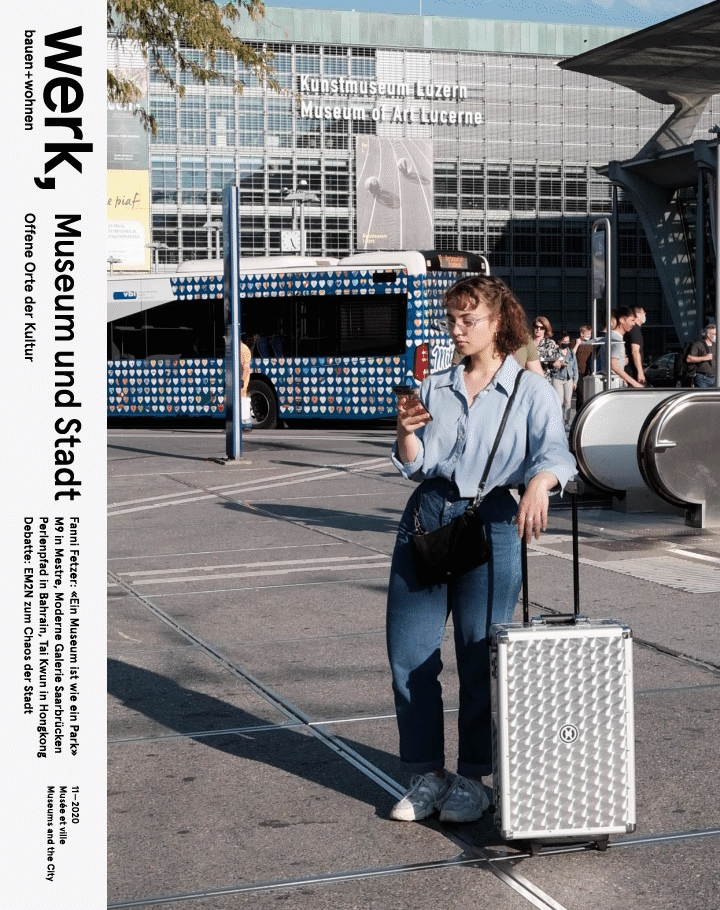werk, bauen + wohnen 11 – 2020

Open the Temples!
Sometimes a look in the rear-view mirror helps us recognise things that we previously did not see so clearly. In 1997 this journal (cf. wbw 12 – 1997) Franz Dröge and Michael Müller diagnosed that museums serves towns as a medium for “culturalization”. Today museums are part of the culture industry, not only as a marketing vehicle, but as an independent branch of the economy. The Corona crisis is revealing just how thick this branch has become today.
The editor of Werk at that time, Ernst Hubeli, illustrated the article by comparing the Centre Beaubourg with the Kunsthaus Bregenz. The model of the open structure presented by Beaubourg was hardly pursued at all in this country, it was the “aura machine” in Bregenz that pointed to the future. But apart from its symbolic significance in the skyline this building gives little back to urban space. On the contrary: its hermetic expression is essentially the opposite of the urban, which breathes diversity and openness. Ought not a museum also be a permeable vessel rather than just space and sign? The educated middle-class, once the regular visitors to museums, is dying out and this social change raises the question: For whom will museums be there in the future?
This is not just a question of art education (see Nina Simons, The Participatory Museum) but also a question of architecture. Institutions such as the Tate Modern in London have been pointing the way for 20 years and the Switch House extension (see wbw 12 – 2016) continues the gesture of openness further. In Switzerland, in contrast, the most recent museum buildings in Zurich, Lausanne or Basel (see wbw 9 – 2016) resemble silent containers. They lack any kind of inviting gesture in an urban sense. Their facades are appliances for representation, which neither can nor wish to take part in an exchange with urban life. In this issue we show museum concepts that work differently. They ensnare and engage in contact with the public, so to speak, which is what makes them relevant public places. — Roland Züger